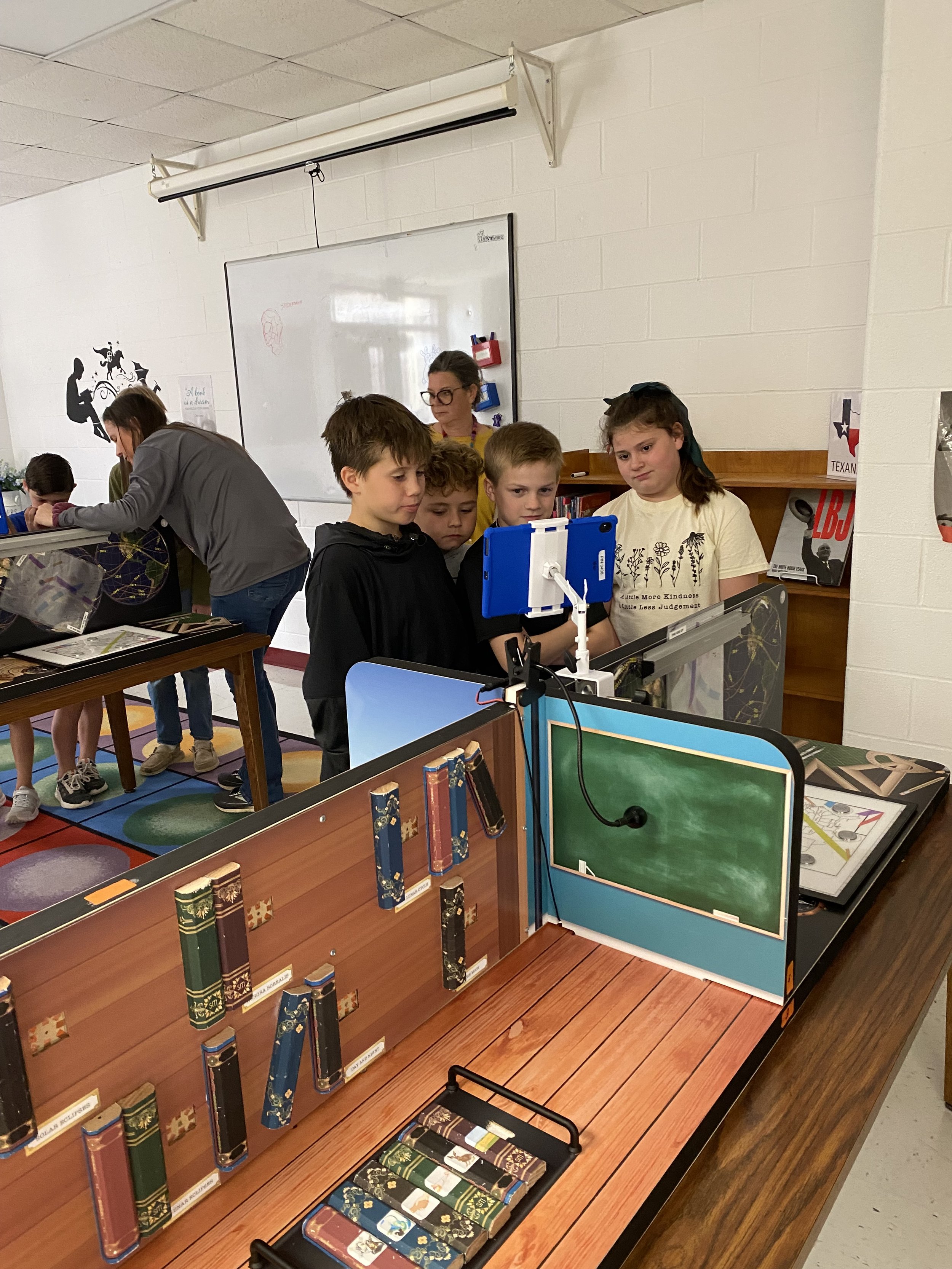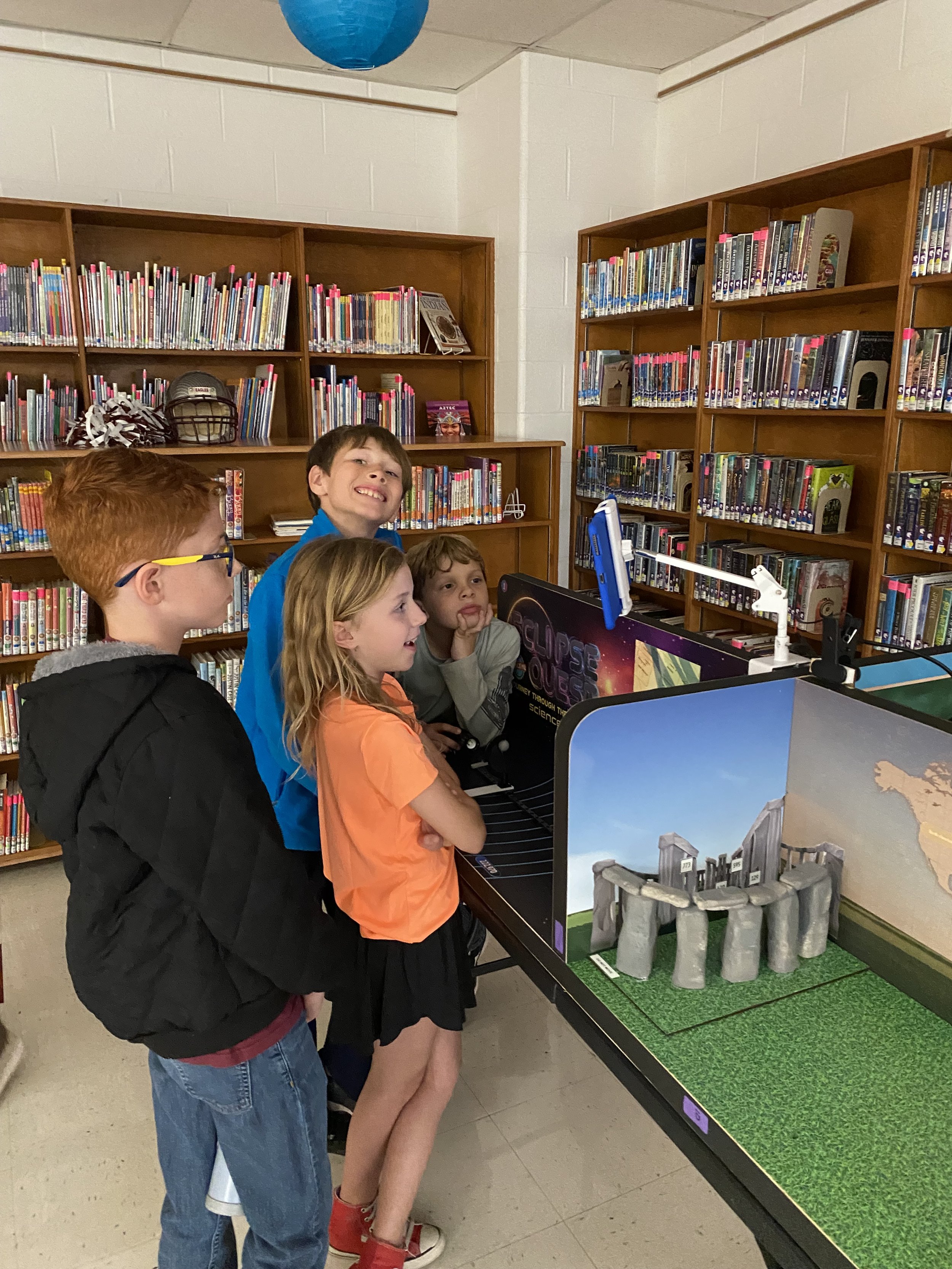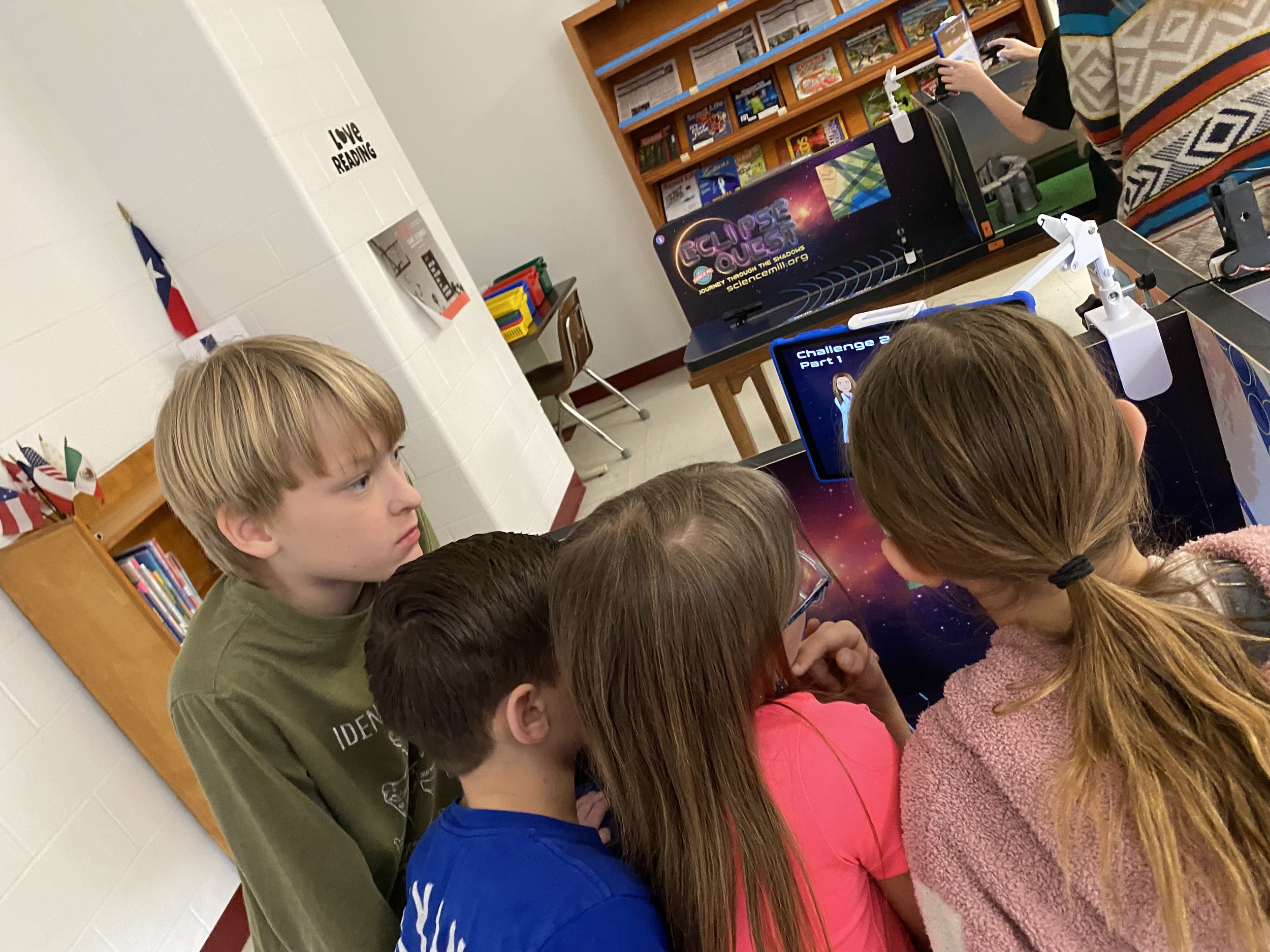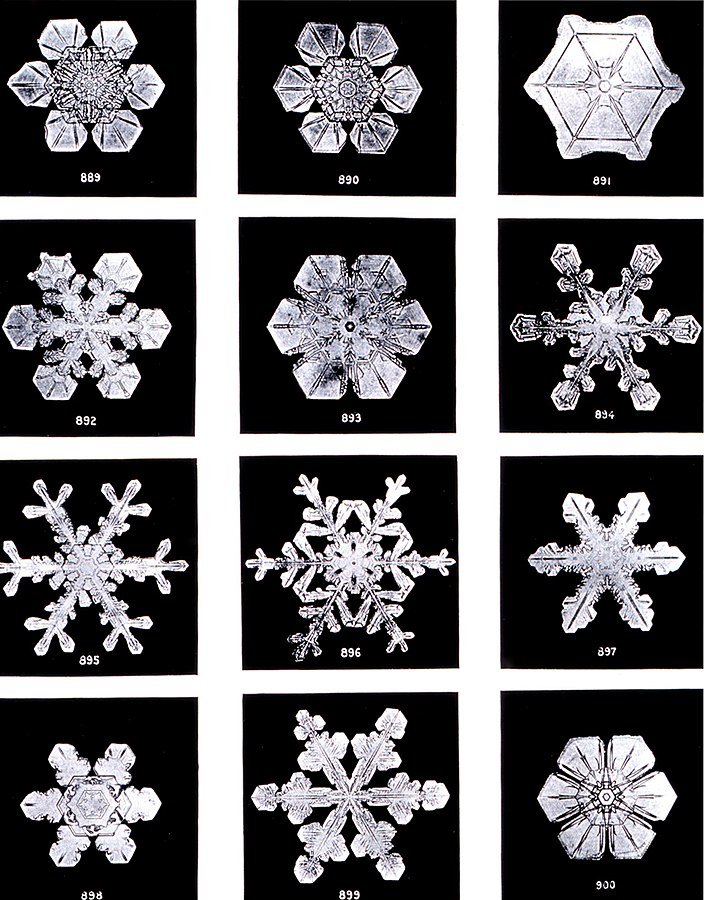This April 8, 2024, many parts of the continental United States will experience a rare, once-in-a-lifetime phenomenon: a total solar eclipse — and the Science Mill in Johnson City, Texas is right in the path of totality! This means that the moon will completely block out the sun for almost 4 minutes.
To help rural students living in the eclipse path better understand the significance of the eclipse, the Science Mill, with the support of the Simons Foundation, created the Eclipse Quest, a mobile eclipse education program. This mobile program, delivered to key rural communities in central Texas, is a gamified, educational experience that walks students through different aspects of the solar eclipse, including its causes, effects, and cultural significance. From assembling their own solar viewing devices to exploring the properties of light and shadow, students will gain a deep understanding of the science behind this incredible celestial event.
STEM Education Specialists Shelby, Angelica, and Aileen with an Eclipse Quest table
Eclipse Quest is designed to maximize student interaction by providing each team of students with access to the four interactive components enhanced by a digital gamified experience that helps the team navigate the activity. As each one of the four activities are completed, it unlocks the code to the next activity. Some questions that get explored include:
Why do eclipses happen so infrequently?
What causes an eclipse?
Who in history was first to make sense of the Earth-moon-sun relationship?
These and other questions are explored as teams of students examine clues, solve mathematical problems, and use critical thinking to complete all stages and unlock the mystery of our solar system!
For continued learning and engagement, each participating student also receives a take-home kit that contains an informative activity booklet and a pair of eclipse glasses. They also get the Science Mill’s unique build-your-own cardboard orrery kits that illustrate how the Sun, Moon, and Earth move to create eclipses.
Excited to learn more about the eclipse? Come watch the eclipse with us on April 8!
Aside from a great view, there will be special eclipse-themed floor activities to enhance your experience. Each eclipse day pass includes admission for 4, 4 pairs of eclipse glasses, and a reserved parking slot in our west parking lot. Limited slots only! No walk-ins will be allowed. See you there!





















